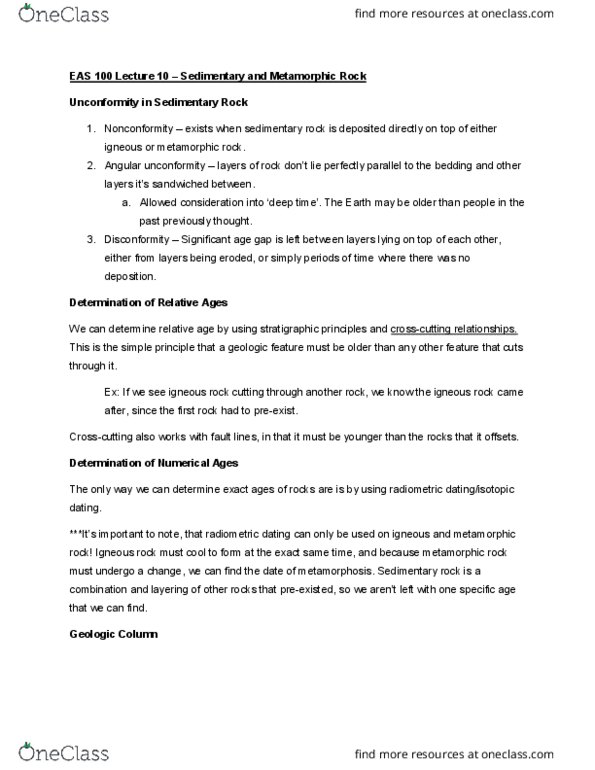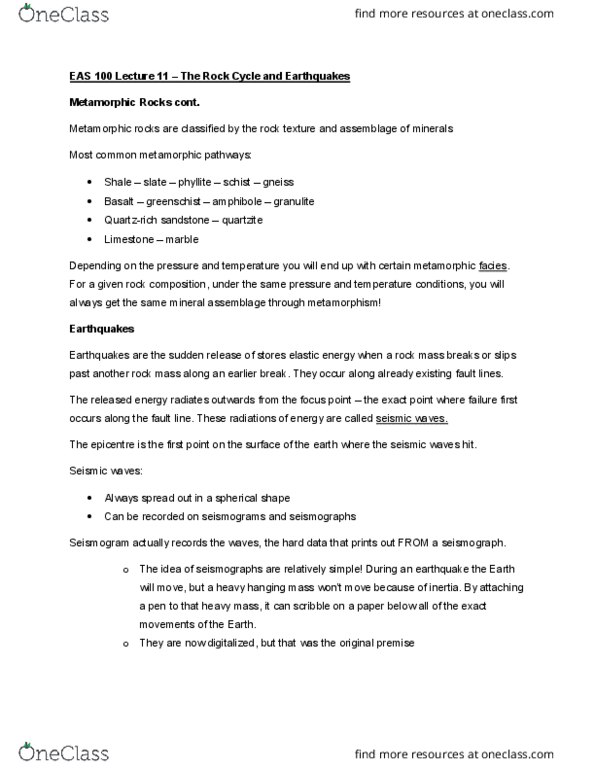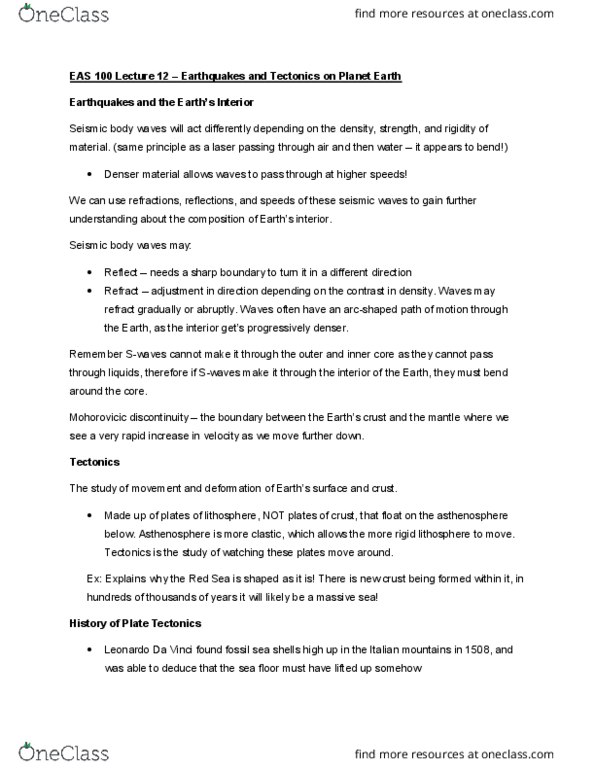EAS100 Lecture Notes - Lecture 11: Metamorphic Facies, Seismic Wave, Plate Tectonics
EAS100 verified notes
11/22View all
Document Summary
Eas 100 lecture 11 the rock cycle and earthquakes. Metamorphic rocks are classified by the rock texture and assemblage of minerals. Most common metamorphic pathways: shale slate phyllite schist gneiss, basalt greenschist amphibole granulite, quartz-rich sandstone quartzite, limestone marble. Depending on the pressure and temperature you will end up with certain metamorphic facies. For a given rock composition, under the same pressure and temperature conditions, you will always get the same mineral assemblage through metamorphism! Earthquakes are the sudden release of stores elastic energy when a rock mass breaks or slips past another rock mass along an earlier break. The released energy radiates outwards from the focus point the exact point where failure first occurs along the fault line. These radiations of energy are called seismic waves. The epicentre is the first point on the surface of the earth where the seismic waves hit. Seismic waves: always spread out in a spherical shape, can be recorded on seismograms and seismographs.




